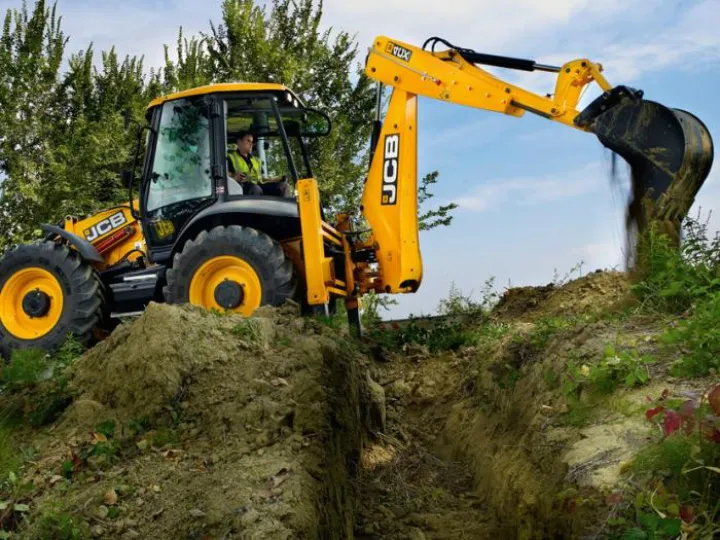Land drainage layout and installation
Land drainage techniques & tips
The obvious purpose of land drainage is to remove excess water. Drainage may be needed for fields, public grassed areas such as sports fields and football pitches and, last but not least, the humble domestic garden.
Land drainage seems a simple enough task on the surface, but there are pitfalls for the unwary.
Many land drainage schemes can become ineffective over time as pipes and trenches get clogged up with sediment, pipework gets damaged by tree roots, or drainage channels are not correctly formed.
Check for a proper functioning outfall
One of the first considerations in setting up a land drainage scheme is deciding where the surplus water is to go. There is little point in creating or maintaining a land drainage system if there is no outfall.
Without somewhere to go water will keep on flooding the land no matter how much pipework is laid down. The outfall could be a ditch, a culvert, brook or public drain.
It is always a good idea to check with the local authority to confirm that the outfall does not need any special permissions. Land drains, for example, should never be connected to a foul drain without express permission and where a connection is allowed, it must also incorporate a trap.
Very often the cause of regularly waterlogged land is nothing more than a blocked ditch or culvert. This is particularly the case on farmland where trenches can often become overgrown.
Land drainage systems can be in excellent working order, but a blocked outflow cause will have caused the surface water to back up. Check watercourses are free of debris, that banks have not collapsed and that existing soakaway are working effectively, before making a start on a land drainage system.
Types of land drainage
There are two basic types of land drainage, groundwater and shallow systems, and which to choose will depend very much on the characteristics of the soil.
The correct type depends on whether there is an impermeable layer beneath the surface. Sometimes land can be waterlogged on the surface but quite dry underground. This happens when a waterproof layer forms just below the soil surface and can happen from compacting or overworking the soil. Farmland can suffer this problem on soils that are over-tilled or have heavy tractors regularly rolling over the fields.
The impermeable layer forms an 'artificial' water table which prevents water draining away and this is why permanent pasture will often dry quickly after heavy rains while surface pools quickly form on a neighbouring field that is regularly tilled.
If there is no impermeable layer then a piped drainage system will easily cure any waterlogging problems, but if such as layer is found then it is also necessary to improve the drainage capacity of the soil with a shallow drainage scheme such as mole or gravel mole drainage to break up the layer.
Make land drainage a downhill task
The second most important consideration is the slope of the land. The most efficient system is one that allows water to collect and flow to the lowest elevation point from the site.
Although surface conditions can certainly be a factor, the slope of the site is a critical issue. A gradual fall is enough for adequate land drainage, and a fall of between 1-50 and 1-100 is fine.
In areas that are to be 'built' such as drives or car parks, it is easy to ensure proper surface drainage by sloping the land gently towards an area where the water will either drain naturally or into a storm sewer or gutter. On open grassed areas, a 'sale' or shallow channel can be created to carry water to lower ground.
How land drains work
The most efficient way to get rid of waterlogged areas is to lay perforated drainage pipe underground. Most drainage pipes are made from PVC and have small perforations to allow water to seep inside.
Pipes are often bedded in shingle to aid drainage. In a small garden, pipes are usually laid in a herringbone pattern with a distance between drainage pipes of two to three metres.
This method is impractical for large areas, such as sports fields, where a distance 10 metres is more economical. Trenches are dug around 750mm deep and wide enough to allow at least 150mm of granular shingle each side of the pipe and 100mm of stone beneath it. Trenches are normally backfilled with 150mm of shingle, 300mm of course sand and a final surface layer of 100mm of soil.
Sometimes contractors will wrap pipes in a textile membrane to speed up water flow and prolong the life of the system by preventing the build-up of fine particles.
Clark & Kent Contractors are experts in land drainage techniques. Call us now on 01630 672329.
Clark&Kent Services Hire
Providing quality specialist plant hire equipment for construction services


